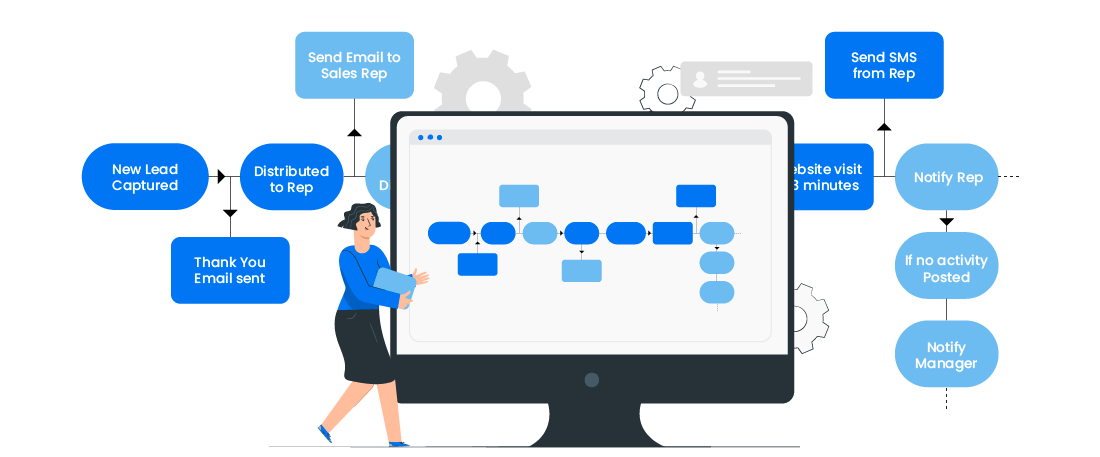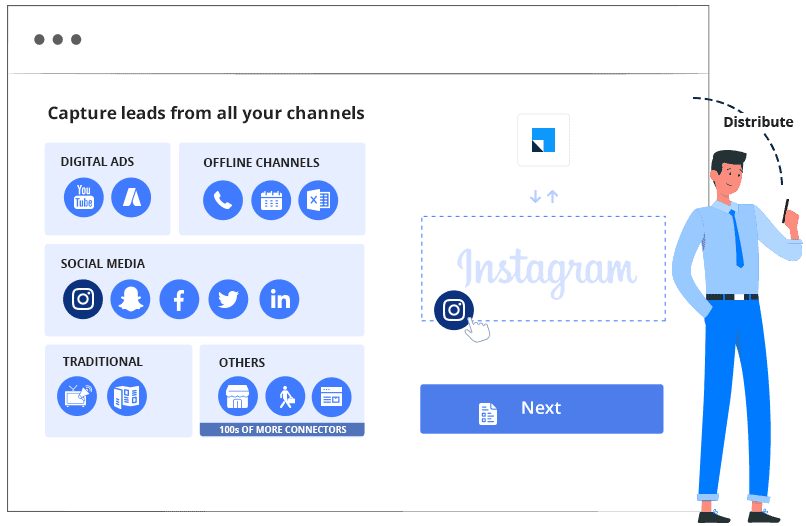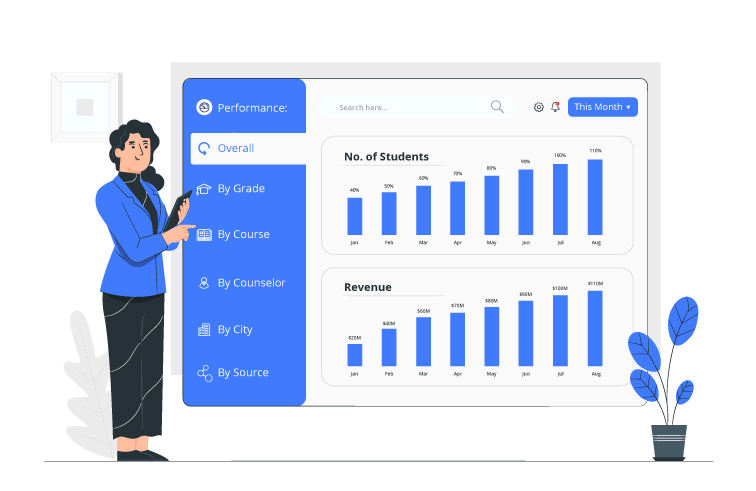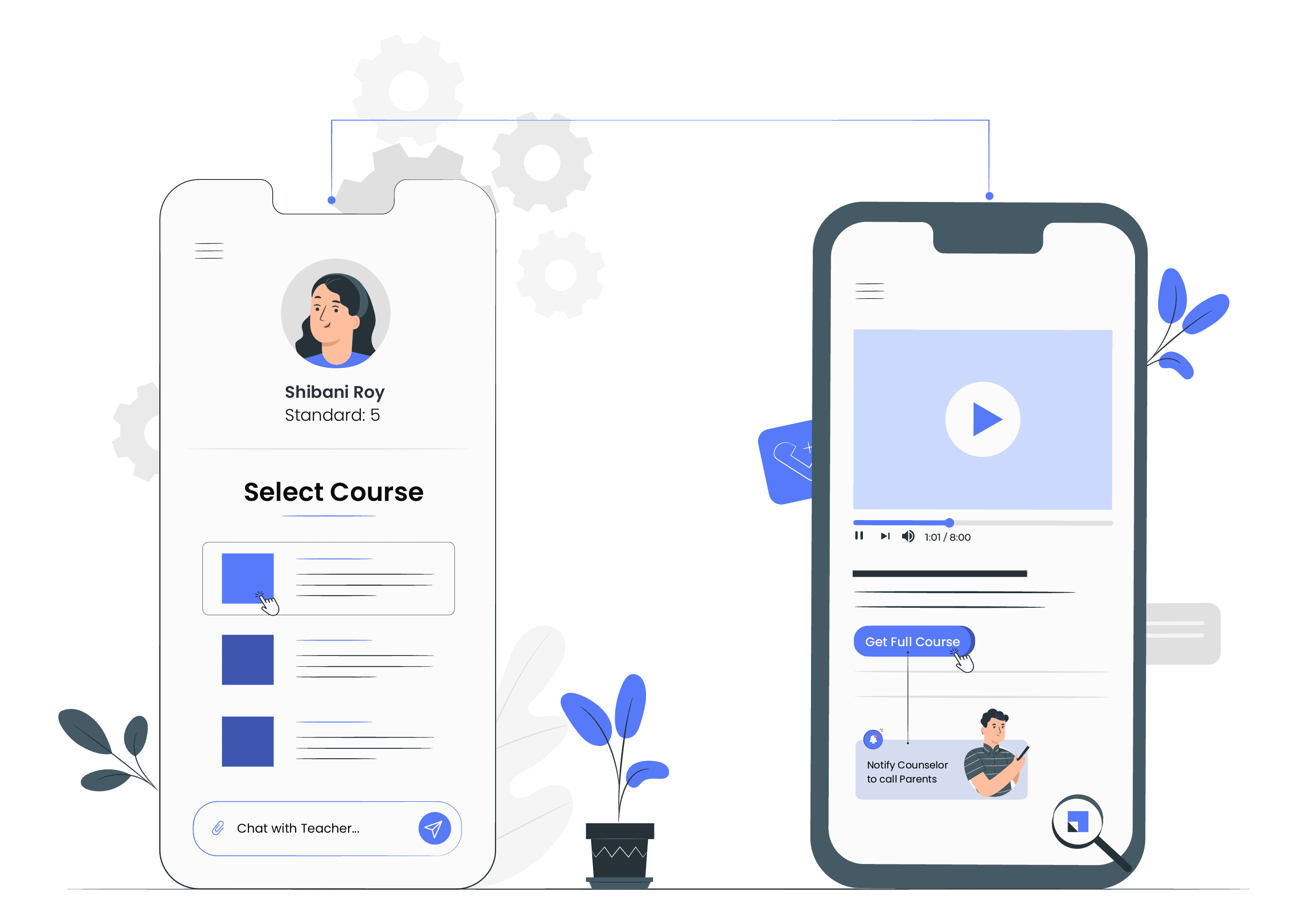There has never been a better time for EdTech sales than now. The majority of schools are closed due to the pandemic. So, most students have to learn online. In the US, more than 74,000 schools have closed to curtail the spread of the virus.
In response, schools are looking for innovative alternatives to on-campus learning and ways to get new students. As a salesperson in the EdTech industry, this is a perfect opportunity to gain more customers. It is because the audience is more willing now.
In this article, you’ll learn how to make your education technology sales process more efficient with automation. But first, let’s look at the importance of automating your EdTech marketing.

Importance of Automation in the EdTech Sales Process
A lot of marketers also want to take advantage of the opportunities in the EdTech space. The ideal way to get ahead of the queue is by adopting the right tools. And also by automating the entire sales process.
Thanks to the increasing number of players in the EdTech industry, customer experience has become a differentiating factor. Interactions with customers need to be personalized and fast-paced. An omnichannel automation platform is thus a key to make this happen.
Modern-day marketers achieve more when data is involved. Automation platforms like EdTech CRMs allow you to harness data, unlike manual systems. It is then easier to create personas from analyzed customer profiles and make informed marketing decisions.
[Also read: How to create highly useful college student personas]
6 Ways to Make the EdTech Sales Process More Efficient
As your sales team work together to bring in more customers, here are some of the most vital parts of the sales process you should consider automating for the best results.
1. Capture inquiries from different channels
Typically, you will get lots of inquires if your run campaigns across many channels. But there are some challenges associated with multi-channel marketing, especially in customer support.
Automation allows you to capture all the inquiries into one central system. These systems are source agnostic and include many different channels, such as social media, education marketplaces, events, APIs, and so on.
It is possible because a marketing automation platform plugs into all your digital channels. So, all inquiries come straight into the CRM. As a sales lead, you can also automatically distribute those leads to your team members or the call-center for a quick follow up.
It is essential to follow up quickly to avoid missing out on a potential subscription. For instance, 30% to 50% of sales go to the salesperson or organization that reaches out first. Now, imagine all the customers you may have lost because you couldn’t send the email as soon as the prospect made contact.

2. Nurture leads with email automation
Emails are one of the most used channels of engagement with customers. Automating that process helps to reduce the time it takes to nurture your leads. It means that once a prospect enters your sales funnel, you can start marketing your products to them instantly.
But, automating your emails is only a part of the work required. You should personalize your messages to induce a human touch if you want better results. Personalized emails are six times more likely to generate higher transaction rates.
With email marketing, the catch is to personalize both the subject and the body of the email. Not one for the other, as some marketers tend to do. Focusing on both areas of your email can lead to higher open rates. Once you have pieces like this covered, automation becomes a lot more productive.
3. Analyze your performance
As a marketer who handles the enrollment of new students, analytics can expose you to valuable insights about your audience. From a sales perspective, the data will reveal how many conversions you’ve gained from all your sources. It includes basic metrics like total leads, qualified leads, app installs, paid subscriptions, and so on.
Overall, you can break the performance data into different categories, such as grades, course, counselor, or city. You can then measure these against the total revenue. The purpose of data analytics here is to reveal satisfaction levels. You want to know what you’re doing well and what you’re not. This way, you can make improvements in different aspects of your EdTech sales process.
For instance, you may realize that students aren’t getting the best from your syllabus and hence, needs to be changed. You might also find out that your targeting needs to be more granular. For instance, if you offer a Machine Learning course, do you want to start marketing to people with a background in Statistics, rather than a lump sum?

4. Perform sales activities faster
Automation ensures high sales efficiency and can boost your sales productivity by 14.5%. The beauty of sales automation is in doing the simple things better. For example, lead distribution. You can set rules in your EdTech automation software to automatically assign student leads to your sales team instantly.
You can also score and qualify leads with ease. The system aggregates the student leads based on preset rules and ranks the ones more likely to convert higher. Doing this helps you to prioritize tasks and save time.
For higher productivity, the sales team can adopt sales notifications to alert the team whenever students take action on your website, ads, downloads brochure, etc. You can use this together with a customizable dashboard that shows each task assigned to your counselors or sales team.
5. Track end-to-end student journey
Understanding students starts with knowing how they are engaging with your website and media. It includes tracking their complete activity across your apps, website, and communication campaigns. For example, you can monitor:
- What videos are they watching?
- How long do they spend on watching each video?
- What links did they click?
Tracking all these activities helps in streamlining the messaging and content for your audience. The right automation platform can help you achieve this. You want leads to be able to move from one stage of the funnel with little or no fuss. One way to do that is by giving them exactly what they want.

6. Stay in the loop with your call center
By automating your call center activities, you can improve the quality of the conversations with prospects. There are call center tools that help you track calls. You can easily see what the agent said during a call while offering insights on how to conduct more meaningful conversations.
Moreover, you can integrate dialers and cloud telephony systems with your EdTech CRM. It will not only automate the calling process but also save time switching devices and making notes. You can record the call with CRM and cloud calling system integration. It will help you during the quality audit and training the sales team.
For instance, LeadSquared EdTech CRM integrates with RingCentral to enable hassle-free calling for the sales team from the CRM platform itself.
The replayed or transcribed calls also offer additional insights into customer pain points. You can address these in your marketing campaigns in the form of blogs or email messaging. Some of the tools are AI-powered. So, you don’t even have to put in much physical or mental work into deciphering the next line of action.
Listen to the EdTech Sales success webinar: how to enhance efficiency for higher ROI?
Tying It All Together with EdTech Sales CRM
EdTech is a scalable business. The growth rate is exponential here. While every EdTech organization aims to ease the learning process, it can be a lot easier to achieve with a seamless and automated internal process.
Moreover, you don’t have to buy different automation software for each process. Instead, adopt an EdTech sales CRM as your one-stop solution.
There are plenty of CRM options out there. But LeadSquared’s EdTech CRM is built just for tech-first learning businesses. You can easily manage all your sales activities, from student acquisition to student journey tracking and sales automation.
You can start using the platform end-to-end free for the next two weeks here.
EdTech Sales FAQs
Parents are the decision-maker in the education of their children. The best way to influence parents is to tell them the success stories of the students who have engaged with you.
Depending on the student’s grade and the course they are interested in, the EdTech sales cycle averages from weeks to months. In this competitive EdTech market, it is crucial to optimize the sales cycle.
Optimizing operation costs and sales-cycle is crucial to close more sales in the EdTech business. Given the scalability of EdTech systems and its projected growth, it is essential to automate the sales process like lead segmentation, distribution, nurturing, and teacher onboarding. Know the expert opinion.
Further reading:







